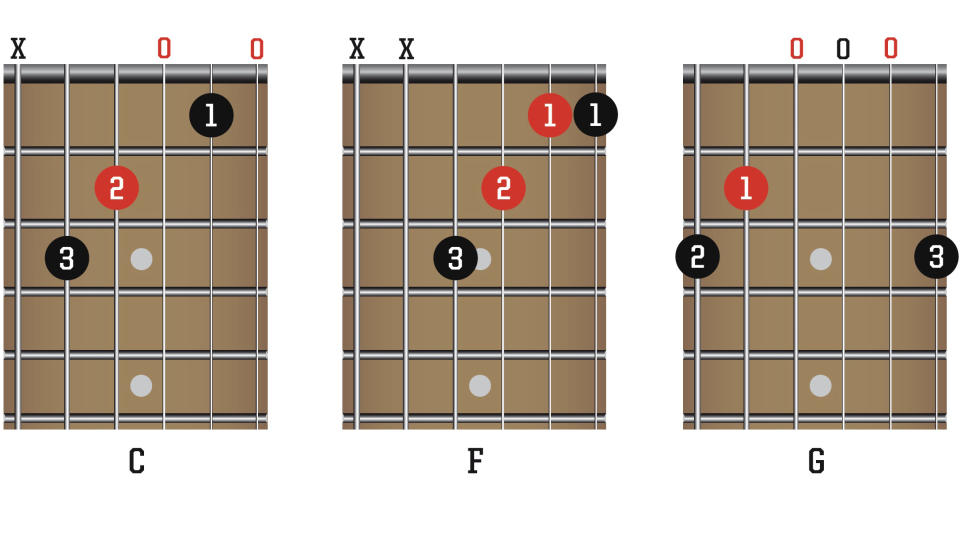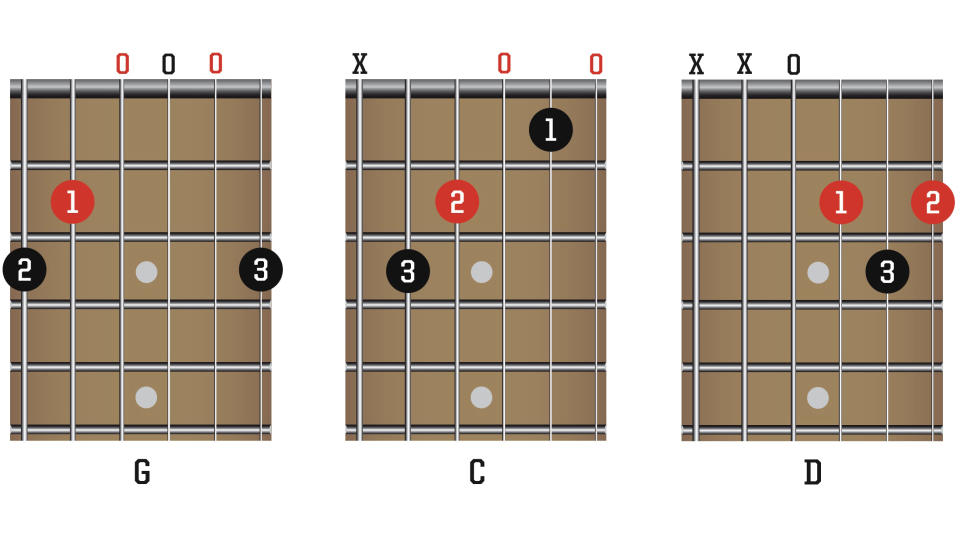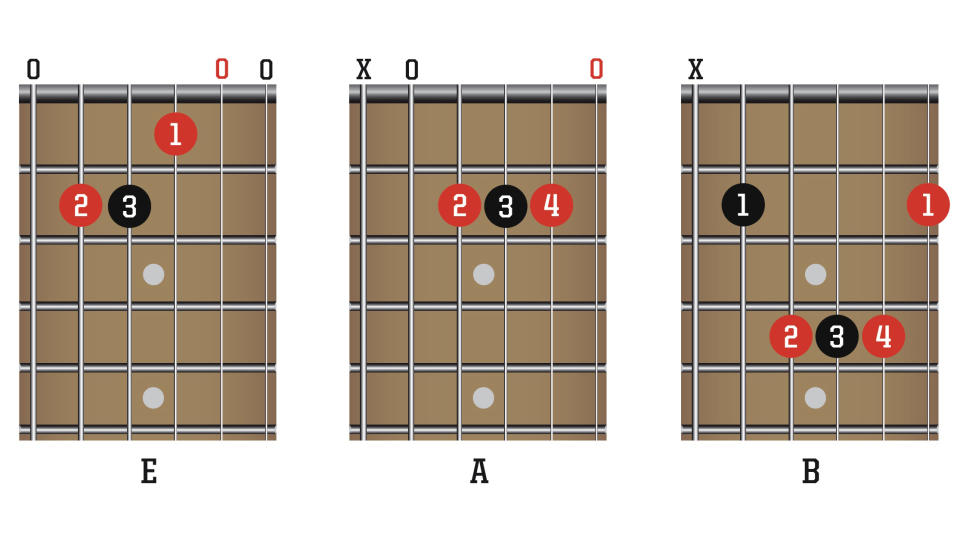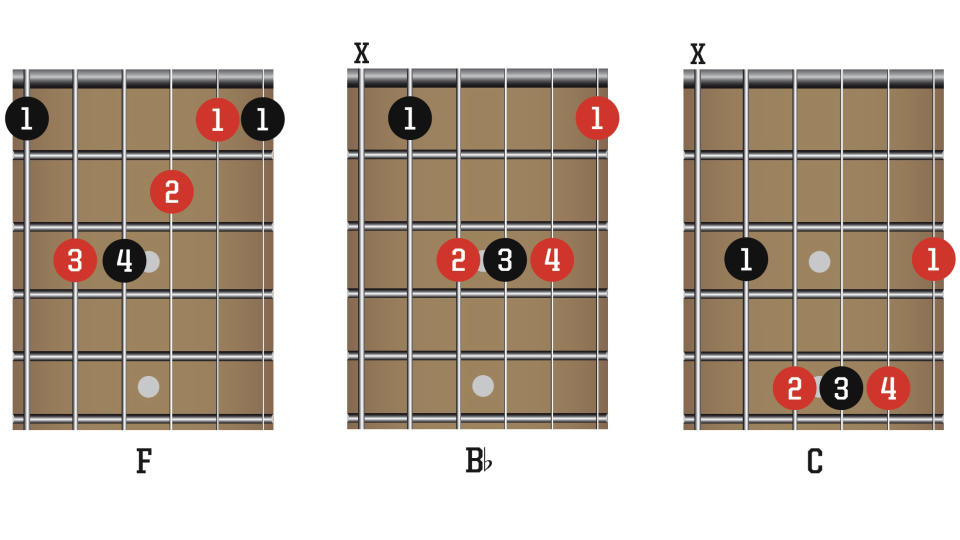Learn the easy 3-chord trick that's behind countless hit songs

You’ve heard jokes about the likes of Status Quo or Chuck Berry writing songs with three chords, right? Well, it’s no joke – and they’re not the only ones taking the easy road: this staple jam session progression is heard throughout rock, blues, folk, and more.
Get the chords down and you’ll have hundreds of songs to try. Known as a I-IV-V (one-four-five’) progression, or ‘three-chord trick’, the chords are built on the first, fourth and fifth notes of the major scale. Learn the scales to find out the chords.
One-four-five progression in C C D E F G A B C

There are seven notes in the key of C major (or eight, if you count C twice). It’s easy to see that the chords of a one-four-five progression in C must be C, F and G.
One-four-five progression in G G A B C D E F# G

This should be easy, by now. Obviously a I-IV-V in G major uses G, C and D chords. It’s really easy to play because you can use open chords.
One-four-five progression in E E F# G# A B C# D# E

E major is hard scale to remember, thanks to the sharp (#) notes. Still, it’s one of the more common scales for guitarists so try to remember the E-A-B progression.
One-four-five progression in F G A B♭ C D E F

These chords are tough, but useful. Tough because you have to play barre chords. Useful because you can move the shapes anywhere on the neck to a different pitch.
Audio: A classic I-IV-V progression in a basic blues style
5 classic songs that use the I-IV-V progression


